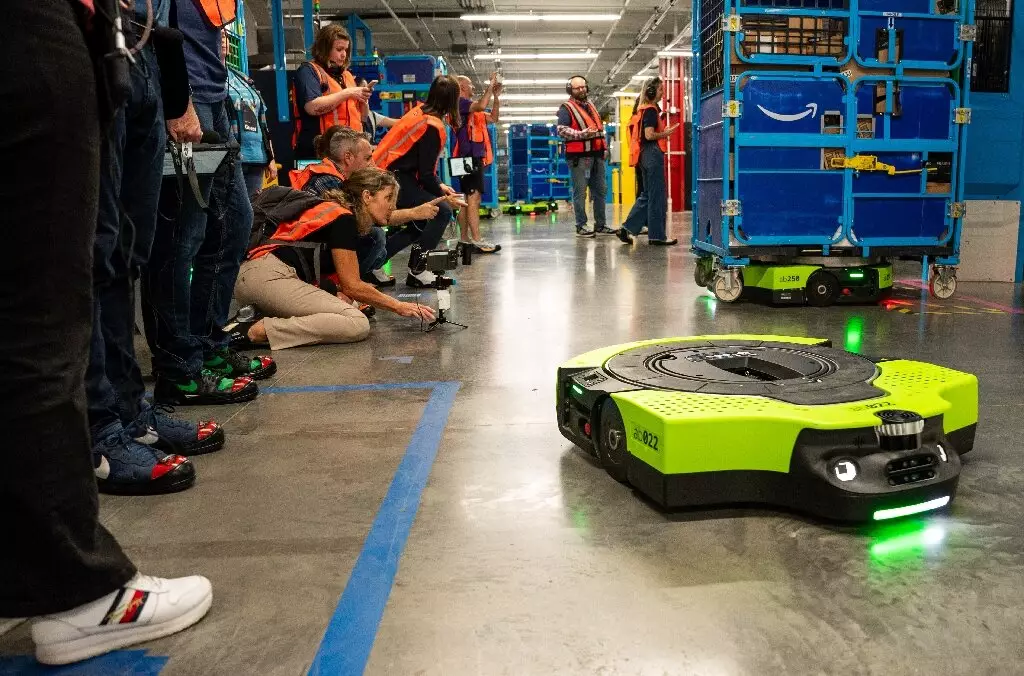In recent years, Amazon has unequivocally cemented itself as a titan within the realm of e-commerce, propelling its operations deeper into everyday life. From advanced robotics to healthcare and various entertainment avenues, the tech conglomerate demonstrates an ambitious agenda to incorporate itself into numerous facets of consumer behavior. This article looks at the latest innovations discussed by Amazon’s leadership, including both the potential advantages and inherent drawbacks of their expanding business strategies.
Amazon’s growing logistics capabilities are continuously refined, as evidenced by recent announcements about an innovative computer system for delivery vans. Designed to optimize delivery efficiency, the system helps vans recognize stops and determines which packages should be delivered. According to Doug Herrington, the head of Amazon Stores, this enhancement is not just a breakthrough in logistics technology but is central to boosting overall consumer engagement. “When we speed up deliveries, customers shop more,” Herrington noted, emphasizing that swift service is crucial to retaining customer loyalty, particularly within the Prime membership framework.
While the urge to expedite deliveries may appear beneficial, it can also raise questions about the underlying principles of the business model. Herrington’s statement about aiming for the fastest Prime delivery speeds globally for 2024 highlights a relentless focus on rapid service that might inadvertently compromise the working conditions of staff and delivery personnel.
The impressive profits reported by Amazon, marked by an astounding $30 billion net income on $575 billion in revenue, fuel the perception of a commercially successful model. Yet the corporation faces serious allegations from the U.S. government regarding monopolistic practices that harm competition. While their flywheel model hinges upon Prime membership to tie various services together—from retail and cloud computing to streaming—the legality of this approach is being contested.
Analysts like Suzy Davidkhanian have pointed out that Amazon’s strategy leverages extensive consumer data to target advertisements more effectively and enhance the overall shopping experience. This data-centric method raises ethical flags and highlights the broader implications of data usage in shaping market dynamics.
Amazon’s venture into healthcare underscores a further commitment to diversifying its offerings. By introducing One Medical, they intend to offer Prime subscribers access to video consultations and medication delivery, showcasing their aim to dominate another lucrative market. Hannah McClellan, leading Amazon Pharmacy, characterized their effort as “building a pharmacy in your pocket,” instantly bringing the company into a direct consumer healthcare relationship.
However, this thrust into an already complex healthcare landscape poses significant risks, especially concerning data privacy and patient trust. The intersection of e-commerce and healthcare could also amplify the consequences of logistical pressures on workers, as swift delivery times may conflict with patient welfare standards.
As Amazon integrates artificial intelligence within its platform, the company has taken strides to enhance the user shopping experience. Features that tailor product descriptions to user preferences illustrate a commitment to utilizing AI for efficient shopping. By adjusting visual and textual cues in real-time, Amazon aims to facilitate a seamless transition from research to purchase.
Nevertheless, this focus on quick sales can lead to a broader issue: the potential for increased worker exploitation in warehouses. Automation in logistics remains a double-edged sword—while it promises improved efficiency, concerns linger regarding worker safety and job stability. Reports suggest heightened injury rates in Amazon facilities, directly associated with the overwhelming emphasis on speed and output.
As Amazon aims to redefine retail with features like “automated micro warehouses,” which will allow for quick pickups of online orders in conjunction with grocery shopping, it raises critical questions about the direction of retail innovation. While these advancements may enhance convenience, they risk fostering a hurried culture that prioritizes speed over the well-being of employees and the broader community.
Ultimately, the questions surrounding Amazon’s rapid expansion and innovation are complex. The delicate balance between operational efficiency, market dominance, and ethical responsibility has never been more crucial. Amazon stands at a crossroads where the very innovations driving their success could bring unintended consequences—both for their employees and the competitive landscape itself. The path ahead will require introspection and adaptability as consumer expectations evolve alongside the company’s ambitious aspirations.


Leave a Reply
You must be logged in to post a comment.